Generative Adversarial Networks
CSE 891: Deep Learning
Vishnu Boddeti
Wednesday November 25, 2020
A Probabilistic Viewpoint
- Goal: modeling $p_{data}$




Overview
- One way to judge the quality of a generative model is to sample from it.
- This field has seen rapid progress:

Implicit Generative Models
- Implicit generative models implicitly define a probability distribution
- Start by sampling the code vector z from a fixed, simple distribution (e.g. spherical Gaussian)
- The generator network computes a differentiable function $G$ mapping $\mathbf{z}$ to an $\mathbf{x}$ in data space

Implicit Generative Models: 1-D Example

Generative Adversarial Networks
- Implicit generative models: if there is a criterion for evaluating the quality of samples, one can compute its gradient with respect to the network parameters, and update the network's parameters to improve the quality of the sample.
- Generative Adversarial Networks (GANs): train two different networks
- Generator Network: tries to produce realistic-looking samples
- Discriminator Network: tries to figure out whether an image came from the training set or the generator network
- The goal of the generator network it to fool the discriminator network.
Generative Adversarial Networks

Generative Adversarial Networks
- Let $D$ be the discriminator's probability of being real data.
- Discriminator's Loss: cross-entropy for binary classification between real and fake data. \begin{equation} J_D = \mathbb{E}_{\mathbf{x}}[-\log D(x)] + \mathbb{E}_{\mathbf{z}}[-\log(1-D(G(\mathbf{z})))] \end{equation}
- A plausible cost function for the generator: the opposite of the discriminator \begin{equation} \begin{aligned} J_G &= -J_D \\ &= \mathbb{E}_{\mathbf{z}}[\log(1-D(G(\mathbf{z})))] \end{aligned} \end{equation}
- This is called a minimax formulation, since the generator and discriminator are playing a zero-sum game against each other. \begin{equation} \max_{G}\min_D J_D \end{equation}
Generative Adversarial Networks
\(\mathcal{F}(\mathbf{x},\theta, \phi) = \mathbb{E}_{p(x^{obs})}[\log D_{\theta}(\mathbf{x}^{obs})] + \mathbb{E}_{p(z)}[\log (1-D_{\theta}(f_{\phi}(z)))]\)\begin{eqnarray} \mathbf{z} &\sim& p(\mathbf{z}) \nonumber \\ \mathbf{x}^{gen} &=& f_{\phi}(\mathbf{z}) \nonumber \end{eqnarray}
- Alternating Minimization: \begin{equation} \min_{\phi}\max_{\theta} \mathcal{F}(\mathbf{x},\theta,\phi) \nonumber \end{equation}
- Step 1 (update $D$): $\mathbf{\theta} = \mathbf{\theta} + \alpha_\mathbf{\theta} \frac{\partial \mathcal{F}(\mathbf{x},\theta, \phi)}{\partial \mathbf{\theta}}$
- Step 2 (update $G$): $\mathbf{\phi} = \mathbf{\phi} + \alpha_\mathbf{\phi} \frac{\partial \mathcal{F}(\mathbf{x},\phi, \phi)}{\partial \mathbf{\phi}}$
- We are not minimizing any overall loss! No training curves to look at!
Generative Adversarial Networks
- Updating the Discriminator:

Generative Adversarial Networks
- Updating the Generator:

Generative Adversarial Networks
Alternating Training of Generator and Discriminator:
A Better Loss Function
- Original Loss Function: \begin{equation} J_G = \mathbb{E}_{\mathbf{z}}[\log(1-D(G(\mathbf{z})))]\nonumber \end{equation}
- Right now $G$ is trained to minimize $\log(1-D(G(\mathbf{z}))$
- At start of training, generator is very bad and discriminator can easily tell apart real/fake, so $D(G(\mathbf{z}))$ close to 0.
- Problem: vanishing gradient for $G$
- Modified Loss Function: \begin{equation} J_G = \mathbb{E}_{\mathbf{z}}[\log(-D(G(\mathbf{z})))]\nonumber \end{equation}
- Instead, train $G$ to minimize $–\log(D(G(\mathbf{z}))$. Then $G$ gets strong gradients at start of training!
- Fixes the saturation problem

Distance Metrics for Adversarial Networks
- Total variation: $\delta(P_r, P_g) = \sup_{x}|P_r(x)-P_g(x)|$
- KL Divergence: $KL(P_r\|P_g) = \int\log\left(\frac{P_r(x)}{P_g(x)}\right)P_r(x)dx$
- Jenson-Shannon Divergence: $JS(P_r, P_g) = KL\left(P_r\|\frac{P_g+P_r}{2}\right) + KL\left(P_g\|\frac{P_r(x)+P_g(x)}{2}\right)$
- Earth-Mover Distance (or Wasserstein-1): $W(P_r, P_g) = \inf_{\gamma\in\prod(P_r,P_g)}\mathbb{E}_{(x,y)\sim \gamma}[\|x-y\|]$
Generative Adversarial Networks
- Since GANs were introduced in 2014, there have been thousands of papers introducing various architectures and training methods.
- Most modern architectures are based on the Deep Convolutional GAN (DCGAN), where the generator and discriminator are both convolutional networks.
- GAN Zoo
GAN Improvements: High Resolution
- Celebrity Faces: $1024\times 1024$

- Karras, Tero, Timo Aila, Samuli Laine, and Jaakko Lehtinen. "Progressive growing of gans for improved quality, stability, and variation." ICLR 2018
GAN Improvements: High Resolution
- Bedrooms: $256\times 256$

- Karras, Tero, Timo Aila, Samuli Laine, and Jaakko Lehtinen. "Progressive growing of gans for improved quality, stability, and variation." ICLR 2018
GAN Improvements: High Resolution
- Objects: $256\times 256$
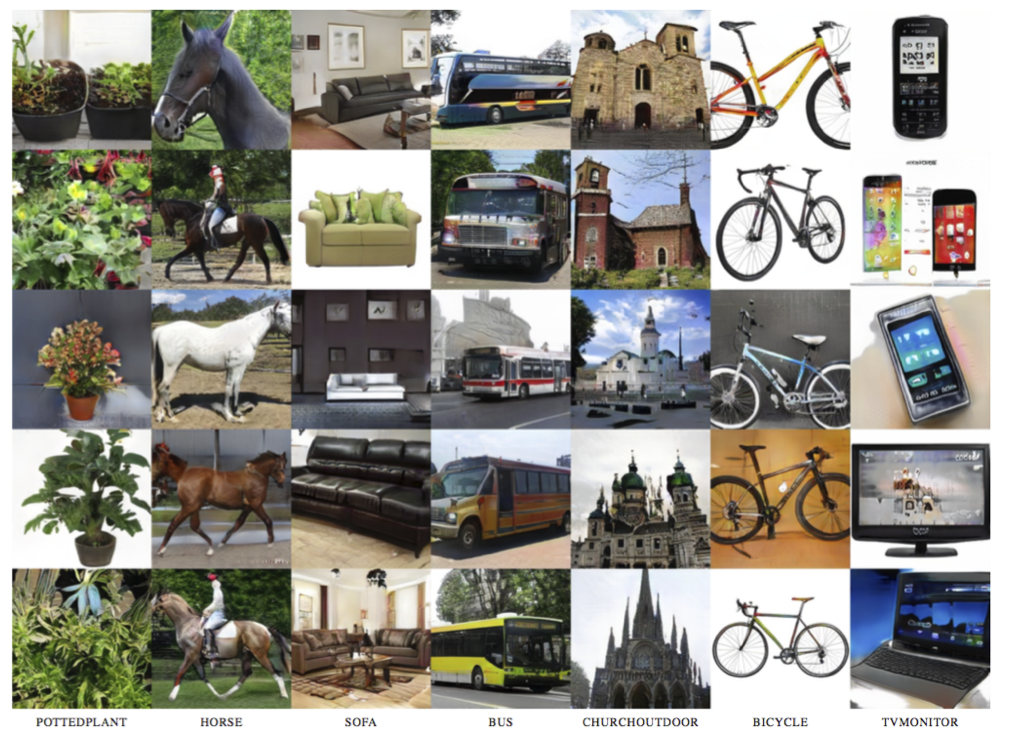
- Karras, Tero, Timo Aila, Samuli Laine, and Jaakko Lehtinen. "Progressive growing of gans for improved quality, stability, and variation." ICLR 2018
GAN Improvements: High Resolution


- Karras et.al, "A Style-Based Generator Architecture for Generative Adversarial Networks" CVPR 2019
Current State-of-the-Art: StyleGAN2

- Karras et al, “Analyzing and Improving the Image Quality of StyleGAN”, CVPR 2020
Conditional GANs
- Conditional Generative Models learn $p(x|y)$ instead of $p(x)$ \begin{equation} p(x|y) = \frac{p(y|x)}{p(y)}p(x) \end{equation}
- Make generator and discriminator both take label y as an additional input!

Conditional GANs: Conditional Batch Normalization
Conditional GANs: Spectral Normalization

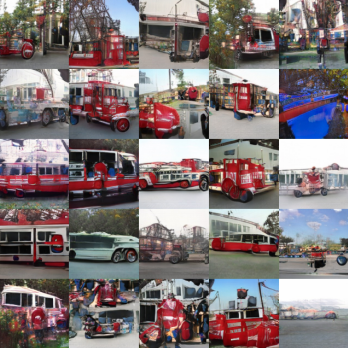
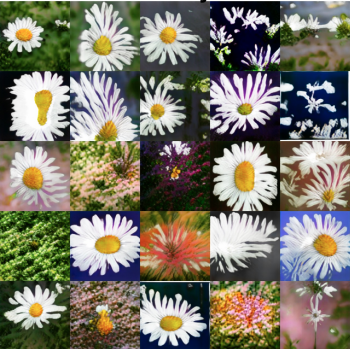
- Miyato et al, "Spectral Normalization for Generative Adversarial Networks", ICLR 2018
Conditional GAN: Self-Attention

- Zhang et al, "Self-Attention Generative Adversarial Networks", ICML 2019
Conditional GAN: BigGAN

- A Brock, J Donahue, K Simonyan, "Large Scale GAN Training for High Fidelity Natural Image Synthesis", ICLR 2019
Generating Videos with GANs
- Clark et al, "Adversarial Video Generation on Complex Datasets", arXiv 2019
Conditioning on more than labels! Text to Image

- Zhang et al, “StackGAN++: Realistic Image Synthesis with Stacked Generative Adversarial Networks.”, TPAMI 2018
- Zhang et al, “StackGAN: Text to Photo-realistic Image Synthesis with Stacked Generative Adversarial Networks.”, ICCV 2017
- Reed et al, “Generative Adversarial Text-to-Image Synthesis”, ICML 2016
Image Super-Resolution: Low-Res to High-Res
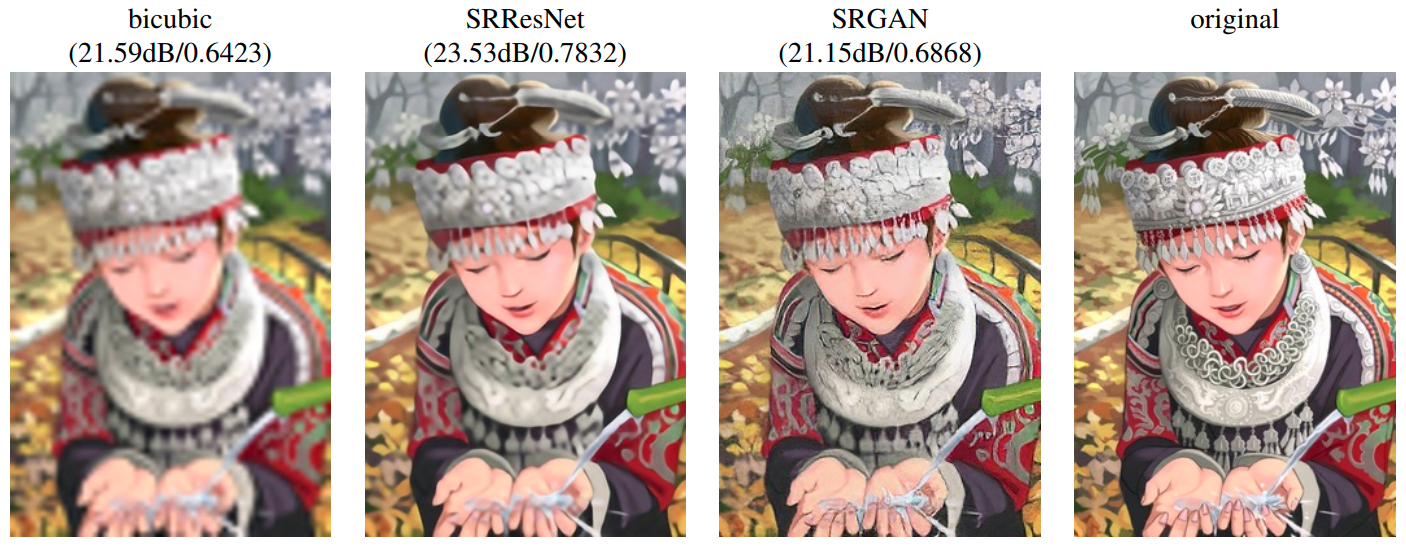
- Ledig et al, "Photo-Realistic Single Image Super-Resolution Using a Generative Adversarial Network", CVPR 2017
Image-to-Image Translation: Pix2Pix

- Isola et al, "Image-to-Image Translation with Conditional Adversarial Nets", CVPR 2017
CycleGAN
Style Transfer: change style while preserving content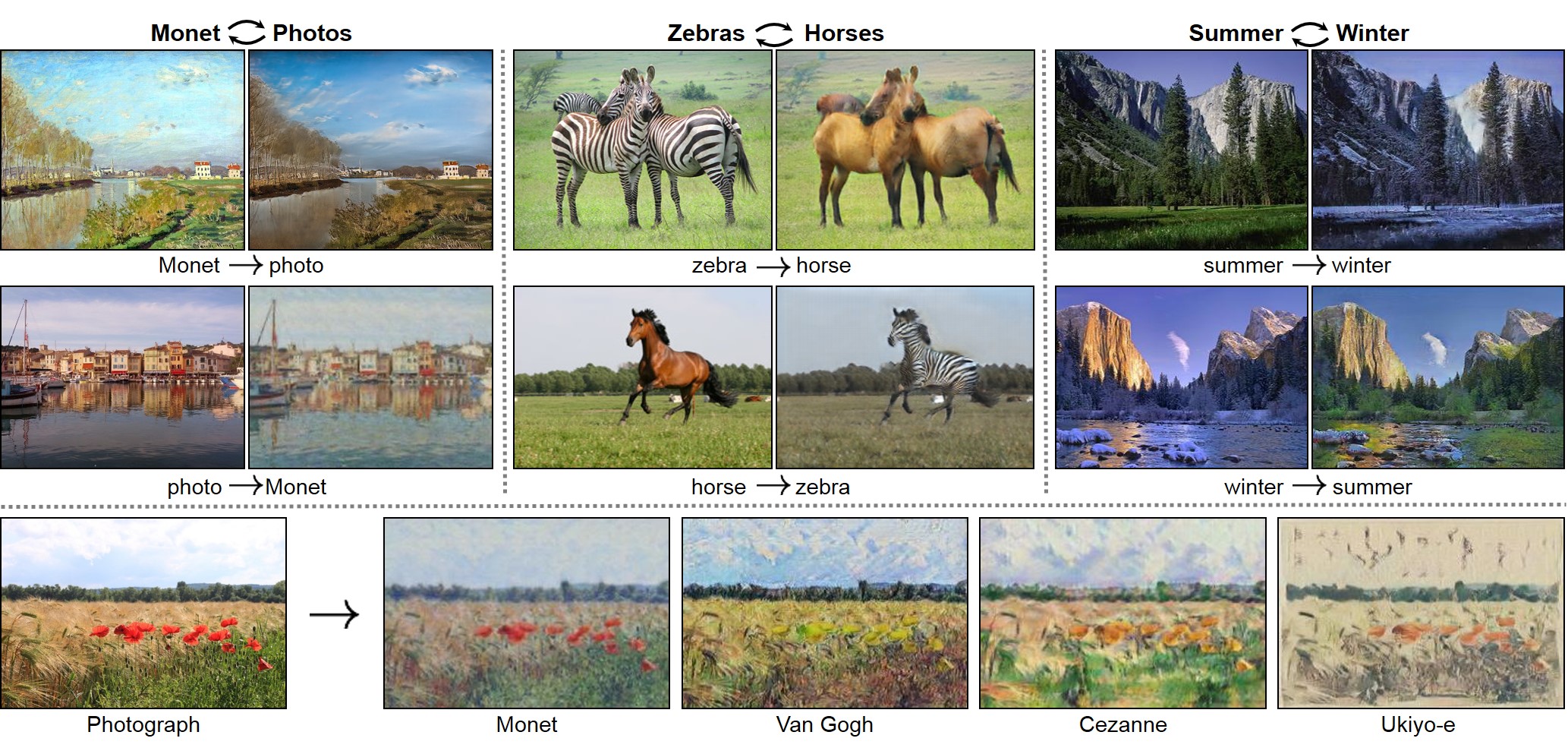
- Zhu et al, "Unpaired Image-to-Image Translation using Cycle-Consistent Adversarial Networks", ICCV 2017
CycleGAN
- If we had paired data (same content in both styles), this would be a supervised learning problem. But this is hard to find.
- The CycleGAN architecture learns to do it from unpaired data.
- Train two different generators to go from style 1 to style 2, and vice versa.
- Make sure the generated samples of style 2 are indistinguishable from real images by a discriminator net.
- Make sure the generators are cycle-consistent: mapping from style 1 to style 2 and back again should give you almost the original image.
- Zhu et al, "Unpaired Image-to-Image Translation using Cycle-Consistent Adversarial Networks", ICCV 2017
CycleGAN

- Zhu et al, "Unpaired Image-to-Image Translation using Cycle-Consistent Adversarial Networks", ICCV 2017
CycleGAN
Style transfer between aerial images and maps
- Zhu et al, "Unpaired Image-to-Image Translation using Cycle-Consistent Adversarial Networks", ICCV 2017
CycleGAN
Style transfer between roads scenes and semantic segmentation
- Zhu et al, "Unpaired Image-to-Image Translation using Cycle-Consistent Adversarial Networks", ICCV 2017
Unpaired Image-to-Image Translation: CycleGAN
- Zhu et al, "Unpaired Image-to-Image Translation using Cycle-Consistent Adversarial Networks", ICCV 2017
Label Map to Image
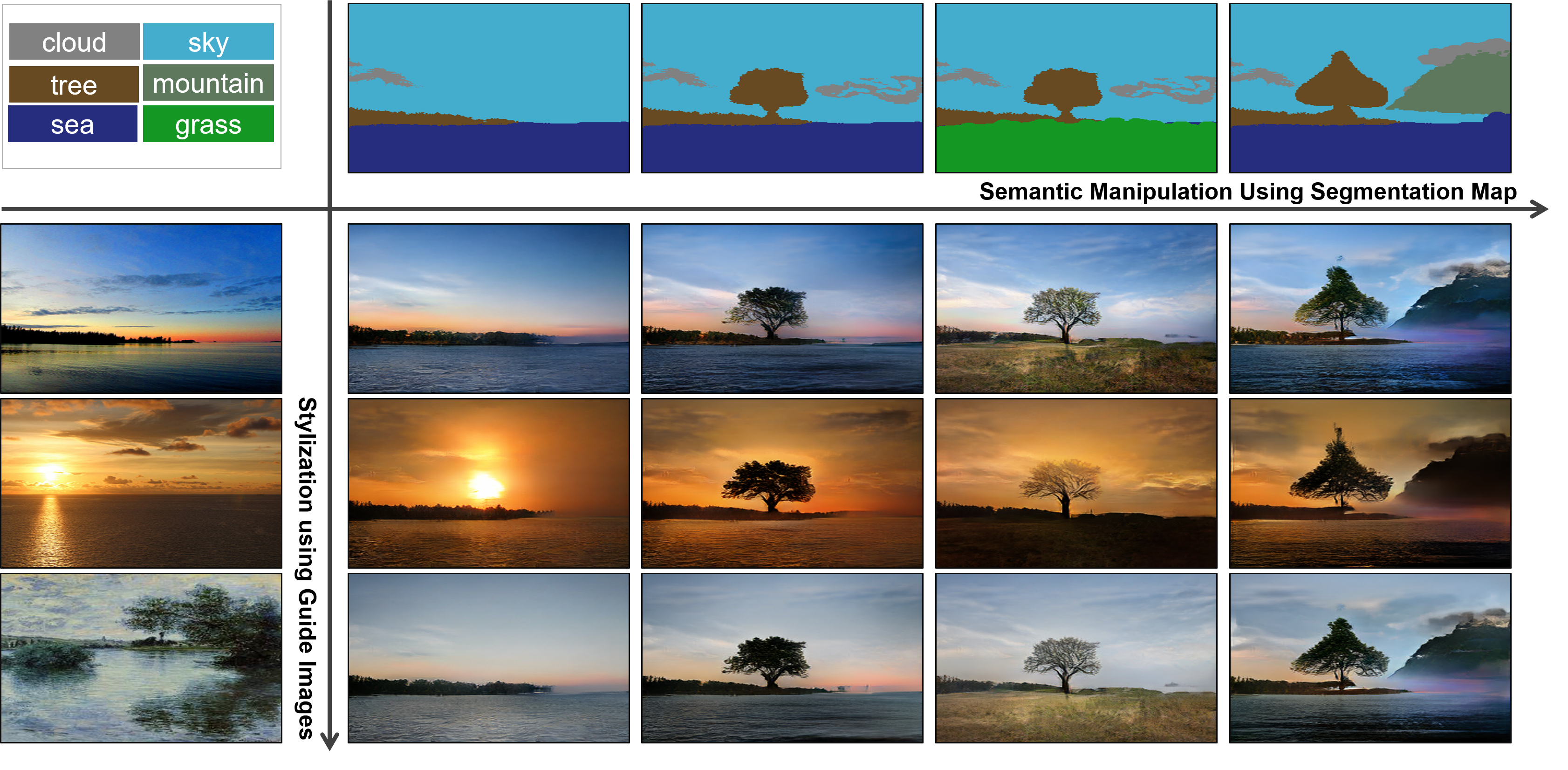
- Park et al, "Semantic Image Synthesis with Spatially-Adaptive Normalization", CVPR 2019
Modern GAN Tricks
- Self-Attention in Generator
- Hinge Loss for Discriminator
- Class conditional information
- Spectral Normalization in generator
- Update discriminator more than generator
- Moving average of generator weights
- Orthogonal weight initialization
- Large batch size
- Bigger models
- Skip $\mathbf{z}$ connections
- Orthogonal regularization
- Truncation Trick
Do GANs Really Learn Distributions
- GANs revolutionized generative modeling by producing crisp, high-resolution images.
- The catch: do not seem to be modeling the distribution at all.
- Cannot measure the log-likelihood they assign to held-out data.
- Are they be memorizing training examples?
- No way to tell if they are dropping important modes from the distribution.
Do GANs Really Learn Distributions
- Equilibrium: may not exist
- Convergence: Optimization problem is concave-concave even for simple instantiations

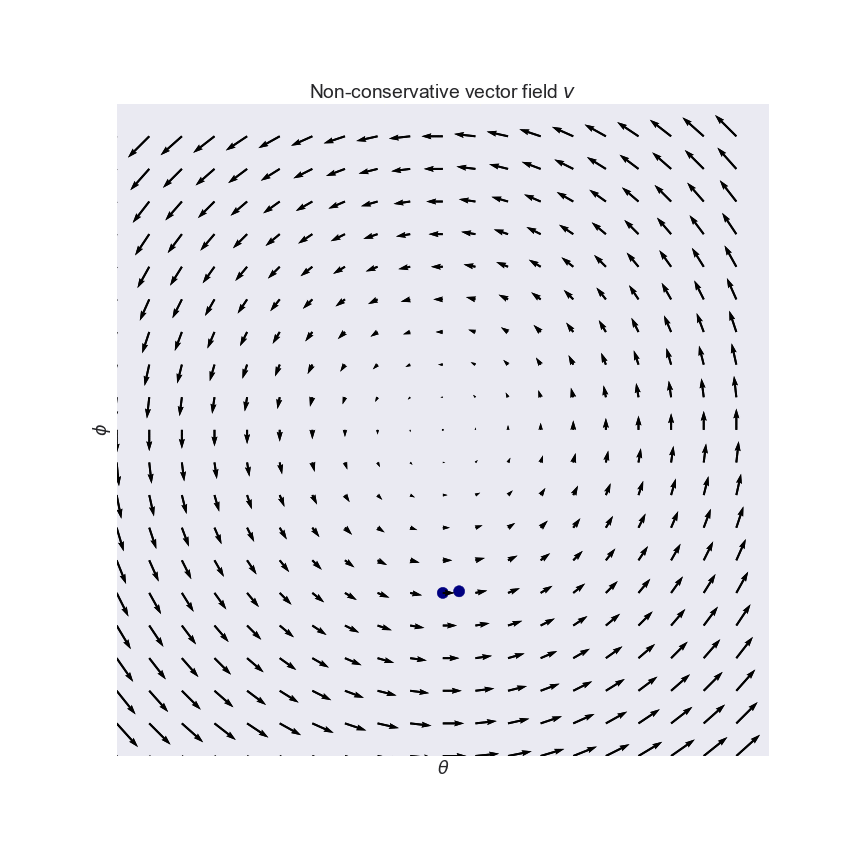
- Arora, Sanjeev, Rong Ge, Yingyu Liang, Tengyu Ma, and Yi Zhang. "Generalization and equilibrium in generative adversarial nets (gans)." arXiv preprint arXiv:1703.00573 (2017)
- Nagarajan, Vaishnavh, and J. Zico Kolter. "Gradient descent GAN optimization is locally stable." NIPS 2017.
GAN Summary
- Jointly train two networks
- Discriminator: classify data as real or fake
- Generator: generate data that fools the discriminator
- Many theoretical questions are still unanswered.
- Many applications !! Very active area of research !!